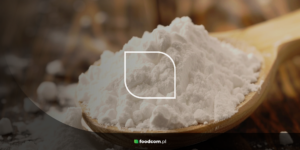Sodium benzoate (E211) – what is it?
Sodium benzoate, also known as E211, is a chemical widely used as a preservative in the food industry. It is the sodium salt of benzoic acid, a colorless or slightly yellowish powder, easily soluble in water. It has low toxicity and is considered safe by most regulatory bodies around the world, including the European Food Safety Authority (EFSA).
Its main function is to prevent the growth of bacteria, yeast and mold, which prolongs the shelf life of food products and maintains their quality. Sodium benzoate is particularly effective in acidic environments (pH less than 7), which makes it often used in products such as sodas, fruit juices, canned foods and pickled products.
Properties of sodium benzoate
Sodium benzoate has several key properties that make it a popular choice as a preservative. First, it is very effective at inhibiting the growth of microorganisms, which helps prevent food spoilage. It is also stable during storage and does not change the organoleptic properties (taste, smell, appearance) of food products. In addition, its use is economical, making it attractive from an economic point of view for food manufacturers.
Application of sodium benzoate
The range of applications of sodium benzoate is wide. It is most commonly used in the food industry as a preservative in products such as soft drinks, juices, canned foods, sauces, jams and dairy products. It is also used in cosmetics, pharmaceuticals and some hygiene products due to its antibacterial and antifungal properties.
Where to buy sodium benzoate?
Sodium benzoate is available in many chemical supply stores, specialty food additives stores and online. It is often sold in powder or granular form, making it easy to dispense and use both in industry and by individual consumers who want to use it for preserving homemade preserves.
Sodium benzoate and its functions in foods
Sodium benzoate has several important functions in food. As a preservative, it prevents the growth of harmful microorganisms, thereby prolonging the shelf life of products and keeping them safe for the consumer. It also acts as an antioxidant, preventing oxidation of food ingredients, which can lead to changes in their color, flavor, or nutritional value. In some cases, it can also be used to regulate the acidity of products, improving their stability and sensory properties.




